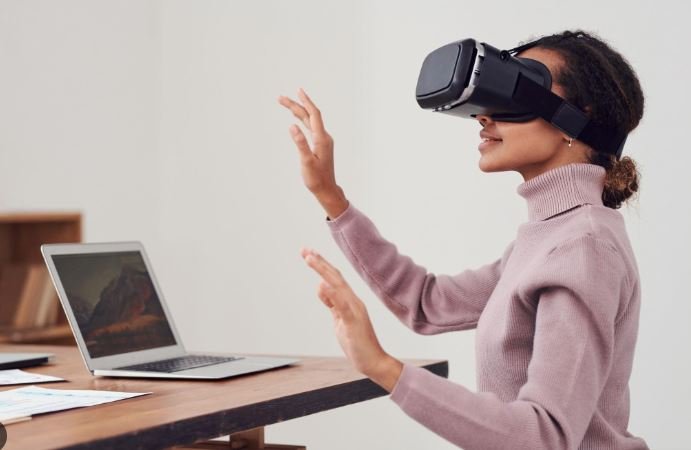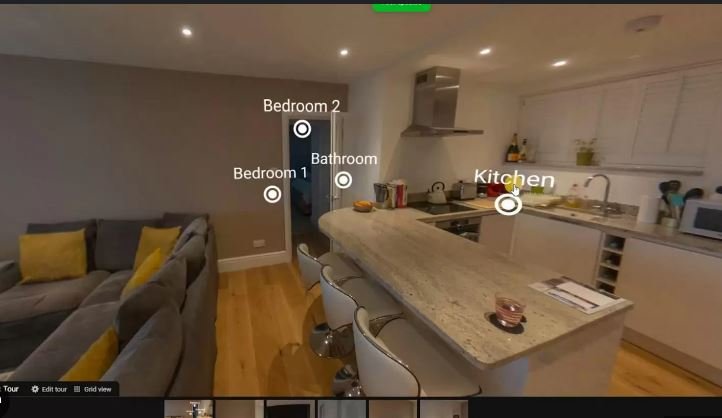To create engaging virtual tours, start with the right equipment. High-quality cameras, wide-angle lenses, and a tripod are essential for capturing clear, comprehensive images. A 360-degree camera can also enhance the virtual tour experience by providing a panoramic view of each room. Investing in professional-grade equipment ensures that your virtual tour is both visually appealing and technically sound.

Planning the Tour Layout
Before taking photos, plan the layout of your virtual tour. Decide on the flow and sequence of rooms to create a logical and engaging path for viewers. Consider the property’s best features and highlight them in the tour. A well-thought-out layout helps viewers navigate smoothly and ensures they see the most important aspects of the property.
Using Professional Lighting
Lighting plays a crucial role in creating an engaging virtual tour. Natural light is ideal, but you may need additional lighting to ensure even illumination and minimize shadows. Use soft, diffused lighting to enhance the appearance of each room and create a warm, inviting atmosphere. Proper lighting improves the quality of the photos and ensures that details are clearly visible.
Capturing High-Resolution Images
High-resolution images are essential for a compelling virtual tour. Ensure that each photo is sharp and detailed to provide viewers with a clear view of the property. Avoid blurry or pixelated images, as they can detract from the overall experience. Take multiple shots from different angles to provide a comprehensive view of each room and feature.
Incorporating Interactive Elements
Interactive elements can enhance the virtual tour experience. Consider adding hotspots, clickable icons, or informative text that provides additional details about specific features or rooms. Interactive elements engage viewers and allow them to explore the property more thoroughly. These features can also help highlight unique selling points and provide valuable information.
Maintaining Consistent Branding
Consistency in branding is important for creating a professional and engaging virtual tour. Use the same style of photography, color schemes, and branding elements throughout the tour. This consistency helps create a cohesive and polished presentation, reinforcing the property’s appeal and your brand’s identity.
Optimizing for User Experience
Ensure that your virtual tour is optimized for user experience. Test the tour on various devices and browsers to ensure it loads quickly and functions smoothly. Consider adding navigation tools, such as floor plans or arrows, to help viewers move through the tour easily. A seamless user experience keeps viewers engaged and encourages them to explore the property further.
Highlighting Key Features
Focus on showcasing the property’s key features in the virtual tour. Capture images of unique elements such as custom cabinetry, high-end appliances, or beautiful outdoor spaces. Emphasize these features to attract potential buyers and set the property apart from others. Highlighting key features helps viewers appreciate the property’s value and appeal.
Editing for Impact
Post-processing and editing are crucial for enhancing the virtual tour. Adjust brightness, contrast, and color balance to ensure the images are vibrant and true to life. Remove any distractions or imperfections to present the property in its best light. Professional editing improves the overall quality of the virtual tour and ensures a polished, attractive presentation.
Promoting the Virtual Tour
Once your virtual tour is complete, promote it effectively to reach potential buyers. Share the tour on your website, social media platforms, and real estate listings. Use engaging descriptions and calls to action to encourage viewers to explore the property and contact you for more information. Effective promotion increases the visibility of the virtual tour and attracts more interested buyers.
Conclusion
Creating engaging virtual tours with photography involves choosing the right equipment, planning the layout, and using professional lighting. High-resolution images, interactive elements, and consistent branding enhance the tour experience. Optimize for user experience, highlight key features, and edit for impact. Effective promotion ensures that your virtual tour reaches and captivates potential buyers.

